FUNDING CUTS IMPACT CT HUMANITIES: Help CT Humanities navigate recent funding cuts and continue our vital work across Connecticut. All donations made to CTH will be matched dollar-for-dollar up to $50,000. Donate today!
Now Viewing:
Politics and Government
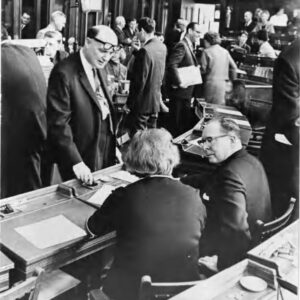
Connecticut’s Constitution of 1965
The Constitution of 1965 transformed Connecticut’s representation model by replacing equal town allotments with a system based on population.
Read
M. Jodi Rell: Connecticut’s 87th Governor
As the second female governor of Connecticut, Jodi Rell faced struggles but helped the state stabilize after controversy and corruption.
Read
Connecticut State Seal and Arms
Connecticut has both an official state seal and state coat of arms that both include the state motto, “Qui Transtulit Sustinet.”
Read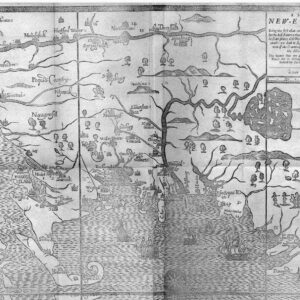
Edward Hopkins: Connecticut’s 2nd Governor
Edward Hopkins (1600–1657) was an influential figure in the early history of the Connecticut Colony, serving multiple terms as colonial governor.
Read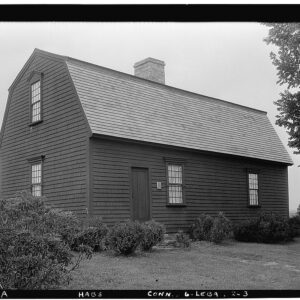
Jonathan Trumbull’s Lebanon War Office: The “Pentagon of the Revolution”
Jonathan Trumbull’s War Office in Lebanon functioned as headquarters for Connecticut’s Council of Safety from 1775 to 1783.
Read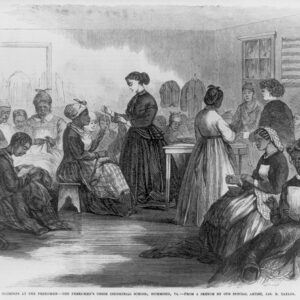
Hebron’s Josephine Sophia (White) Griffing and a Vision for Post-Emancipation America
From before emancipation and the 13th Amendment, Josephine Sophie White Griffing of Hebron, Connecticut, was an ardent advocate for enslaved and free people.
Read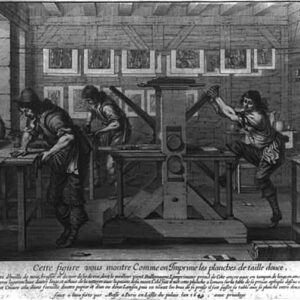
Thomas Short – Connecticut’s First Official Printer
Thomas Short became the Connecticut Colony’s first official printer in 1708, printing the laws and proclamations for the colonial legislature as well as the colony’s first book.
Read
Clare Boothe Luce Changed Perceptions about Women in Business and Politics
Clare Boothe Luce became the first woman to represent Connecticut in the US House of Representatives and later became an ambassador to Italy.
Read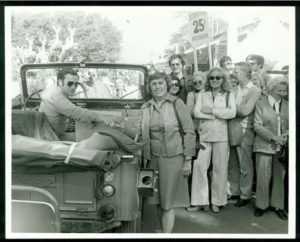
America’s First Woman Governor: Ella Grasso, 1919-1981
Born to Italian immigrant parents in Windsor Locks, Grasso held state and federal offices at a time when women politicians were rare.
Read
Alexander Calder and Making Art Political
In addition to his famous works of art, Alexander Calder lent his talents and reputation to support political campaigns in the 1960s and 70s.
Read
Bradley Airport’s Military Origins
In 1941, the United States government anxiously pursued opportunities to establish an air base in Connecticut to bolster defenses along the East Coast.
Read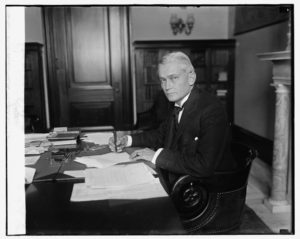
From the State Historian: Discovering the Explorer Hiram Bingham III
Of all the Connecticans who have left their mark in distant places, perhaps none made a more lasting—or more controversial—impression than this explorer.
Read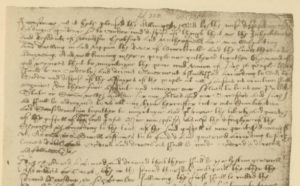
The Fundamental Orders of Connecticut
The Fundamental Orders, inspired by Thomas Hooker’s sermon of May 31, 1638, provided the framework for the government of the Connecticut colony from 1639 to 1662.
Read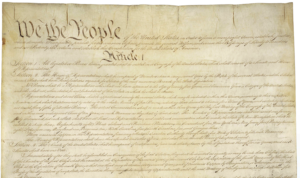
Connecticut Ratifies US Constitution – Today in History: January 9
On January 9, 1788, Connecticut became the fifth state to ratify the Constitution of the United States.
Read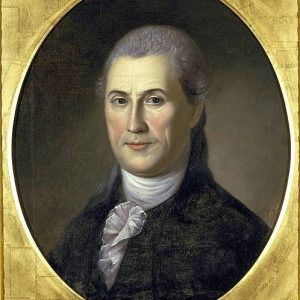
Samuel Huntington, the first President of the United States, dies – Today in History: January 5
Samuel Huntington not only served as Connecticut’s governor and a member of the Continental Congress, but, some would argue, the first President of the United States.
Read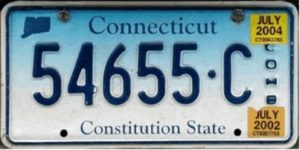
Creative License, or Fundamental Fact?
In 1973, the state legislature mandated that Connecticut’s license plates should display the state slogan “Constitution State.”
Read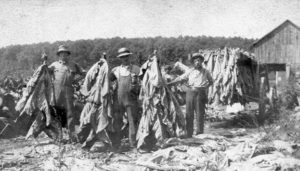
William Pinney Does It All for Ellington
A lifelong resident of Ellington, William N. Pinney served his town and his state up until his death at the age of 90.
Read
The Hartford Convention – Today in History: December 15
On December 15, 1814, delegates to the Hartford Convention met in secret at the Old State House in Hartford.
Read
From the State Historian: The Map That Wasn’t a Map
The Charter of 1662 described Connecticut boundaries that extended all the way to the the Pacific Ocean!
Read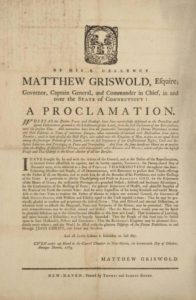
Governor Griswold’s Thanksgiving Proclamation
This broadside issued by Thomas and Samuel Green of New Haven announced the Proclamation of Governor Matthew Griswold naming Thursday the 24th of November, 1785, “a Day of Publick Thanksgiving.”
Read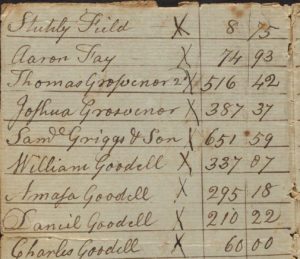
The Connecticut Poll Tax
The Connecticut poll tax lasted for almost 300 years and encompassed four different variants.
Read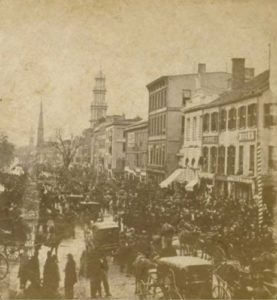
When Elections in Hartford Were a Piece of Cake
Unlike today, in the 18th and 19th centuries, Election Day met with great celebration.
Read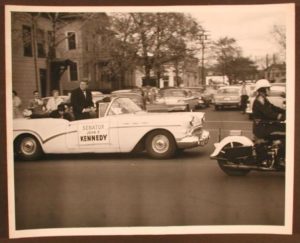
The Kennedys in Connecticut – Today in History: November 6
On November 6, 1960, forty-eight hours before the Presidential election, Senator John F. Kennedy of Massachusetts addressed a street rally in New Haven.
Read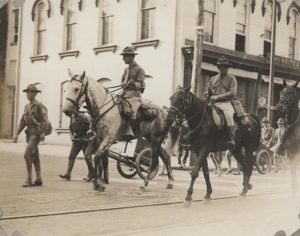
Gerald MacGuire and the Plot to Overthrow Franklin Roosevelt
Gerald MacGuire, a prominent Connecticut businessman, became deeply involved in a reported plot to overthrow the presidency of Franklin Roosevelt.
Read
Mohegan Federal Recognition
“We are no longer the little old tribe that lives upon the hill. We are now the Nation that lives upon the hill.”
Read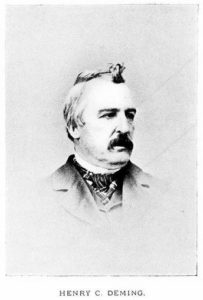
Henry Deming: Mayor of Hartford and New Orleans
Henry Deming served as mayor of Hartford and then as the provisional mayor of New Orleans during the Civil War before writing a biography of Ulysses S. Grant.
Read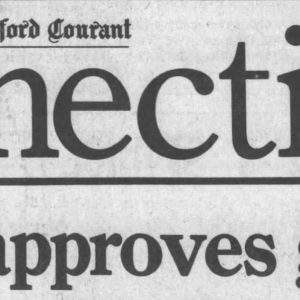
Eighteen Years in the Making: Connecticut’s 1991 Gay Rights Law
Connecticut’s 1991 “gay-rights law” was one of the state’s first LGBTQ+ civil rights laws and prohibited discrimination based on sexual orientation in housing, employment, and credit.
Read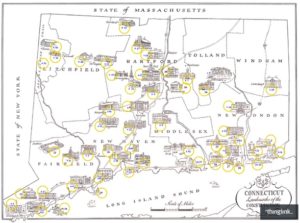
Map – Connecticut Landmarks of the Constitution
A map of some of the Connecticut Landmarks of the Constitution researched and published by the Connecticut Trust for Historic Preservation.
Read
Literacy Tests and the Right To Vote
Connecticut was the first state to require a literacy test of would-be voters and, even as the practice came under fire as a tool of discrimination, the state held steady until 1970.
Read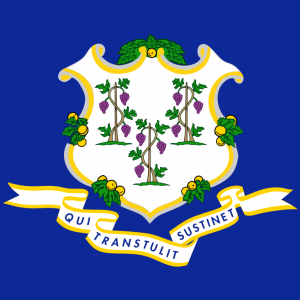
Connecticut’s Official State Flag – Who Knew?
While Connecticut used variations of flags for state functions, the legislature did not adopt an official state flag until 1897.
Read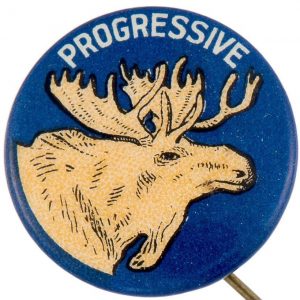
The Bull Moose Party in Connecticut
Connecticut expressed a brief interest in Theodore Roosevelt’s third-party, the “Bull Moose Party,” but the loss of the 1912 election proved career-ending for many candidates.
Read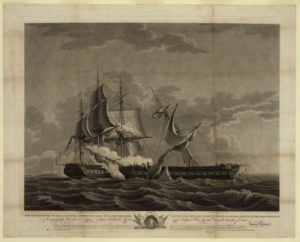
Fame and Infamy for the Hulls of Derby
Two Connecticut men, uncle and nephew, had starring roles—one in defeat and one in victory—during the War of 1812.
Read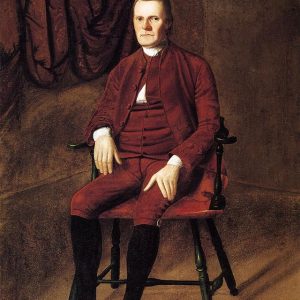
Roger Sherman Dies – Today in History: July 23
On July 23, 1793, Roger Sherman—a Connecticut merchant, lawyer, and statesman—died in New Haven.
Read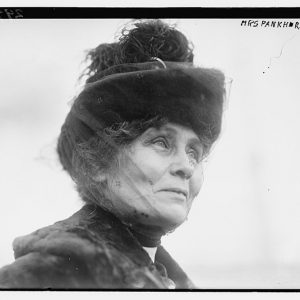
Emmeline Pankhurst’s “Freedom or Death” Speech Energizes Connecticut Women in 1913
In 1913, a famous British suffragist, Emmeline Pankhurst, gave a powerful and memorable speech on the steps of the Parsons Theater in Hartford.
Read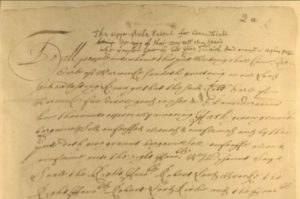
The Charter of 1662
The Connecticut Charter, which provided the basis for Connecticut government until 1818, was secured because of Connecticut’s realization after the restoration of Charles II to the English throne in 1660 that the government of the colony lacked any legal foundation.
Read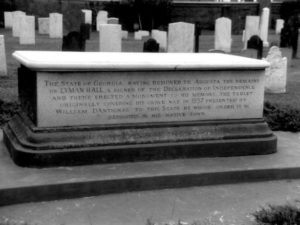
Wallingford Native Son Signed the Declaration of Independence
Lyman Hall served in the Second Continental Congress and signed the Declaration of Independence.
Read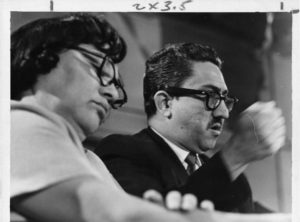
Maria Colón Sánchez, State Representative and Community Advocate
The first Latina elected to the Connecticut General Assembly started as a grassroots activist for Hartford’s Puerto Rican community.
Read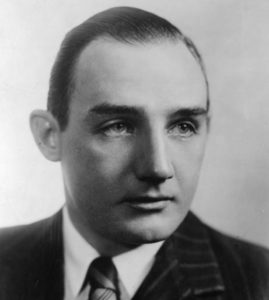
Joseph Alsop: Cunning Political Columnist of Mid-Century America
Joseph Wright Alsop was one of the country’s most well-known political journalists of the 20th century and was drawn into some of the most influential power circles in the world.
Read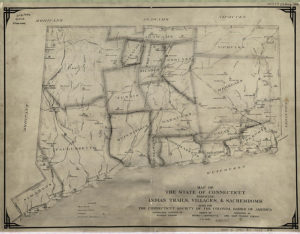
Andover to Woodstock: How Connecticut Ended Up with 169 Towns
Religious mandates, the difficulties of colonial-era travel, and industrialization are a few of the forces that gave rise to the proliferation of towns in our state.
Read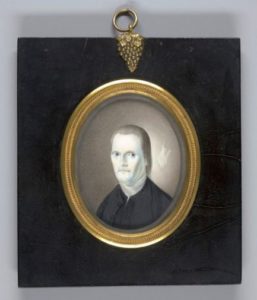
A Remarkable Signature – Who Knew?
Roger Sherman, Connecticut merchant, lawyer, and statesman, was the only person to sign all four documents of the American Revolution.
Read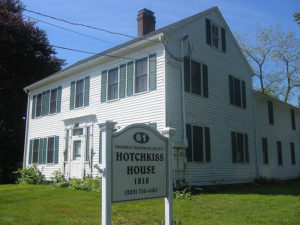
Prospect’s David Miles Hotchkiss and the Free Soil Party
David Miles Hotchkiss was an educator, abolitionist, and public servant who served the town of Prospect throughout his entire life.
Read
Plainville Has Been Flying High for Over 100 Years
The town of Plainville claims a special relationship with aviation culture that dates back to the earliest days of flight in the state.
Read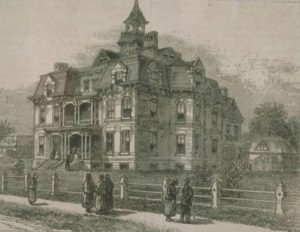
Yung Wing, the Chinese Educational Mission, and Transnational Connecticut
In their respective tragic but inspiring final American acts, Yung and the Mission reflect the worst and best of the Chinese Exclusion Act era.
Read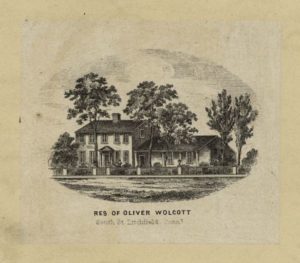
Soldier, Patriot, and Politician: The Life of Oliver Wolcott
Oliver Wolcott served in military in the Seven Years’ War and the American Revolution, but was also a popular member of the Continental Congress and governor of Connecticut.
Read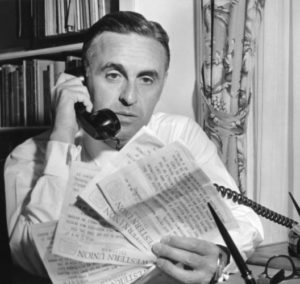
Abraham Ribicoff: Kennedy Confidant and Connecticut’s First Jewish Governor
Abraham Ribicoff rose from a New Britain tenement to become Connecticut’s first Jewish governor and a confidant of President John F. Kennedy.
Read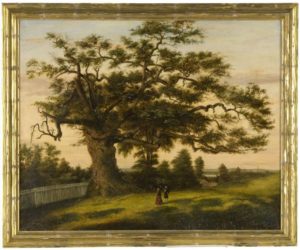
The Unsteady Meaning of “The Land of Steady Habits”
Connecticut’s description as “the land of steady habits” has been used to stand for a wide list of subjects, from beer drinking to sushi to hair bobbing.
Read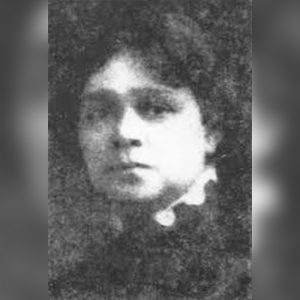
Mary Townsend Seymour: Hartford’s Organizer, Activist, and Suffragist
Mary Townsend Seymour was a leading organizer, civil rights activist, suffragist, and so much more in Hartford during the early 20th century.
Read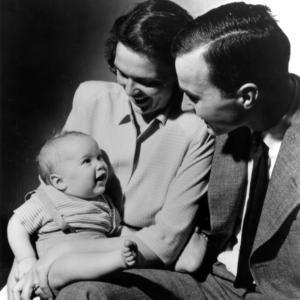
Connecticut’s Only US President – Who Knew?
43rd President George W. Bush was born in New Haven at the Grace-New Haven Community Hospital on July 6, 1946.
Read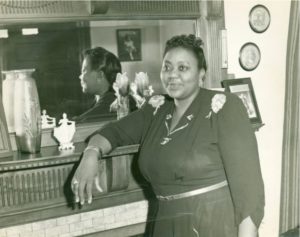
Marietta Canty House
Hartford’s Marietta Canty House is primarily significant for its association with actress Marietta Canty, who received critical acclaim for her performances in theater, radio, motion pictures, and television as well as for her political and social activities.
Read
Richard Reihl: The Hate Crime That Became a Turning Point for LGBTQ+ Civil Rights
The 1988 murder of Richard Reihl, a gay man from Wethersfield, galvanized and mobilized communities to organize and transform LGBTQ+ civil rights legislation in the state for decades to come.
Read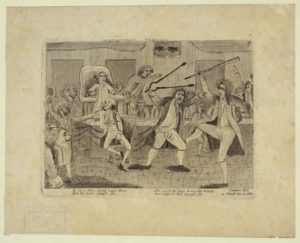
Roger Griswold Starts a Brawl in Congress – Today in History: February 15
On February 15, 1798, Roger Griswold, a US House Representative from Connecticut, attacked Matthew Lyon on the floor of the House of Representatives.
Read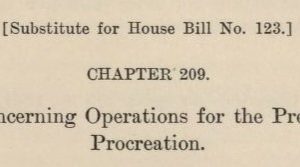
LGBTQ+ Mental Health Treatment in the 20th Century
The simultaneous development of accepted mental health practices and LGBTQ+ visibility over the decades offers a chance to examine how psychological research contributed to the discrimination of LGBTQ+ individuals and communities.
Read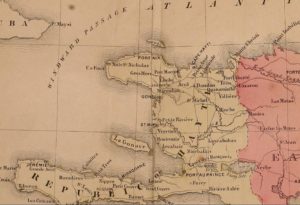
Ebenezer Bassett’s Historic Journey
Ebenezer Bassett, an educator, activist, and associate of Frederick Douglass, served the US as its first African American ambassador.
Read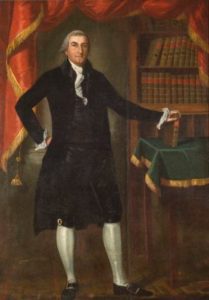
Uriah Tracy Authors the Rules for Impeachment
Uriah Tracy was an attorney and politician who took up arms against the British after the Battles of Lexington and Concord.
Read
Henry Barnard Advances State and National Education Initiatives
This 19th-century reformer sought to promote harmonious social and civic behavior by revamping the US school system.
Read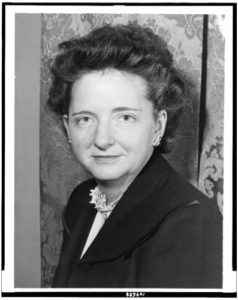
Elizabeth Bentley Born – Today in History: January 1
Elizabeth Terrill Bentley is best known for her role as an American spy for the Soviet Union—and for her defection to become a US informer.
Read
Chief G’tinemong/Ralph W. Sturges
This Mohegan Chief is remembered for successfully guiding the Tribe through the final stages of Federal Recognition, which it obtained in 1994.
Read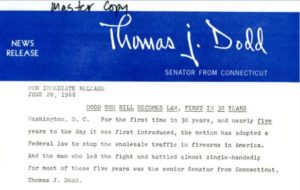
Thomas J. Dodd and the Gun Control Act of 1968
In 1963, Thomas J. Dodd crafted Senate Bill 1975, a “Bill to Regulate the Interstate Shipment of Firearms.”
Read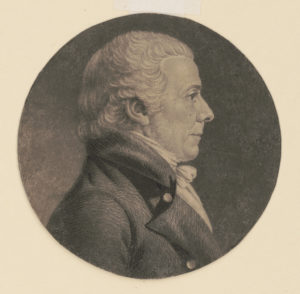
The Revolution of 1817
The Connecticut gubernatorial election of 1817 transferred power from the Federalists to the Republican Party, ending the Congregational Church’s domination.
Read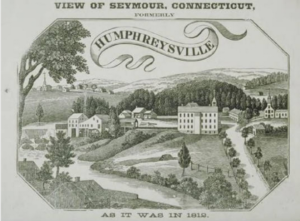
Seymour was Chusetown – Who Knew?
The town of Seymour was originally named Chuseville, before taking the name Humphreysville (after David Humphreys). It incorporated as Seymour in 1850.
Read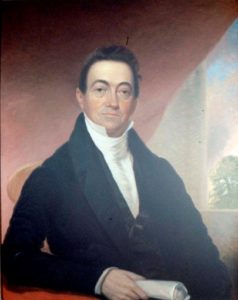
Samuel Foot: A Trader Turned Governor
Samuel Foot was a West India trader from Cheshire, Connecticut, who went on to a successful career in politics in the US Congress.
Read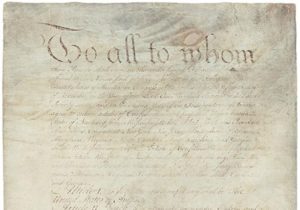
The Articles of Confederation: America’s First Constitution
The Articles of Confederation loosely served as the nation’s first formal governing document, until ultimately being replaced by the US Constitution.
Read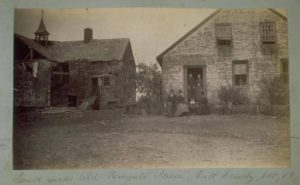
Notorious New-Gate Prison
A failed Simsbury copper mine is now a national historic landmark in East Granby.
Read
Byram River Flood – Today in History: October 15
A few minutes before 11:00 pm on October 15, 1955, Greenwich officials pulled the alarm signal and declared a state of emergency.
Read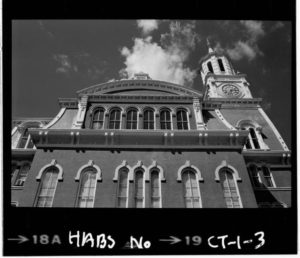
Site Lines: Monuments to Connecticut’s Lost County Government
County government operated in Connecticut in one form or another for nearly 300 years before the state abolished it in 1960.
Read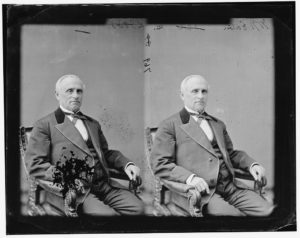
William Eaton, a Peace Democrat and Civil War Opponent
This 19th century Connecticut politician took a controversial stand against a war that would divide the Union and decrease states’ rights.
Read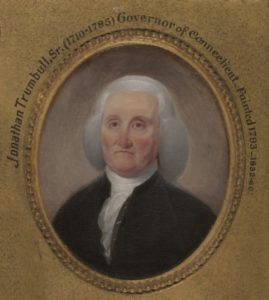
Governor Jonathan Trumbull Dies – Today in History: August 17
On August 17, 1785, Connecticut’s first governor, Jonathan Trumbull, died.
Read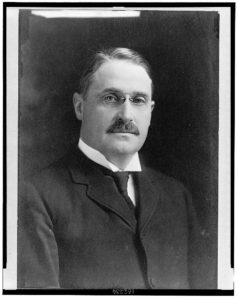
Senator Brandegee Stonewalls Women’s Suffrage
Senator Frank Brandegee of New London vehemently opposed progressive legislation at the national level, particularly when it came to the issue of women’s suffrage.
Read
An Old Saybrook Borough has a Stately History
The Borough of Fenwick, a well-known summer community in Old Saybrook, is named for George Fenwick and his family.
Read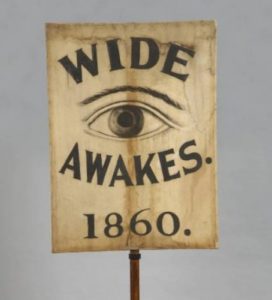
Hartford Wide-Awakes – Today in History: July 26
On July 26, 1860, the Hartford Wide-Awakes welcomed the Newark, New Jersey, Wide-Awakes to a banquet and ratification meeting at Hartford’s City Hall.
Read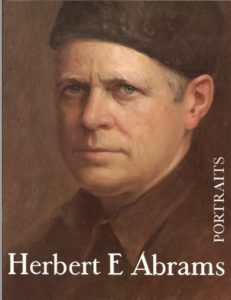
Herbert Abrams Immortalizes the Nation’s Leaders
Herbert Abrams was an American painter whose portraits hang in some of the most prestigious institutions in the country.
Read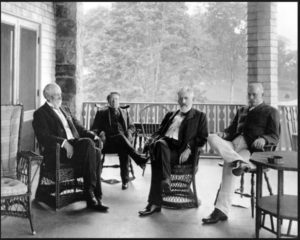
Orville Platt Helps Define International Relations after the Spanish-American War
Orville Platt was a powerful Republican senator from Washington, Connecticut. He presented the Platt Amendment to Congress.
Read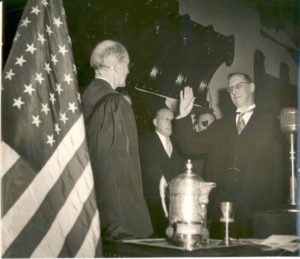
Did You Know a Connecticut Governor Was a US Spy?
In late 1943 James Lukens McConaughy became Deputy Director in Charge of Schools and Training for the precursor of the Central Intelligence agency.
Read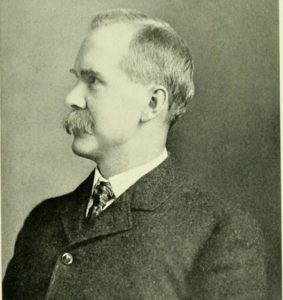
Connecticut Attorney General John H. Light and His Fight for Woman’s Suffrage
Attorney General John H. Light made his pro-suffrage stance public at a time when such advocacy could still lead to criticism
Read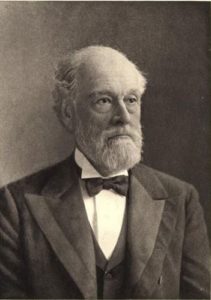
The Platt Amendment – Today in History: June 12
Orville Platt from Meriden presented the Platt Amendment to Congress in 1901. It essentially made Cuba an American protectorate.
Read
Hooker’s Journey to Hartford
In early June 1636, Puritan religious leader Reverend Thomas Hooker left the Boston area with one hundred men, women, and children and set out for the Connecticut valley.
Read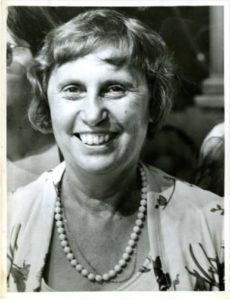
First Woman Elected as US State Governor Born – Today in History: May 10
On May 10, 1919, Ella Grasso, née Ella Rosa Giovanna Oliva Tambussi, the first woman governor in the US to be elected “in her own right,” was born in Windsor Locks.
Read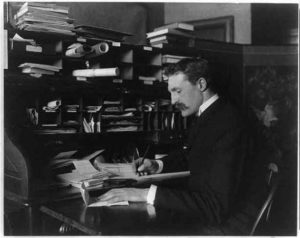
Gifford Pinchot: Bridging Two Eras of National Conservation
Connecticut-born Gifford Pinochet oversaw the rapid expansion of national forest land holdings in the early 1900s.
Read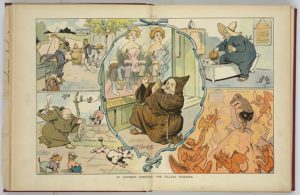
Connecticut and the Comstock Law
Connecticut passed its own state law in 1879 that carried the anti-contraception movement further than any other state in the country.
Read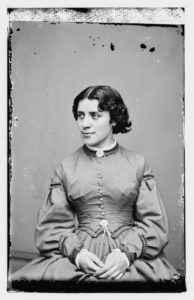
Anna Elizabeth Dickinson at Touro Hall – Today in History: March 24
On March 24, 1863, Anna Elizabeth Dickinson, a 20-year-old Quaker and abolitionist from Pennsylvania, spoke at Hartford’s Touro Hall.
Read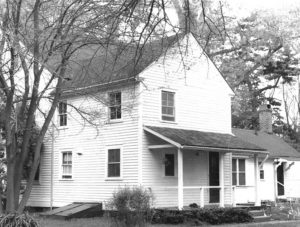
The Smith Sisters, Their Cows, and Women’s Rights in Glastonbury
By refusing to pay unfair taxes, these siblings became national symbols of discrimination suffered by women and of the struggle of the individual against government.
Read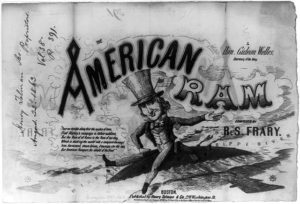
Gideon Welles, US Secretary of the Navy and Lincoln’s “Neptune”
Gideon Welles was the Secretary of the United States Navy from 1861 to 1869 and a cabinet member during the presidencies of Abraham Lincoln and Andrew Johnson.
Read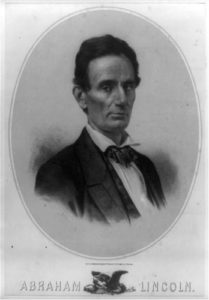
Abraham Lincoln’s Republican Rally – Today in History: March 5
On March 5, 1860, Abraham Lincoln addressed the Republicans of Hartford at City Hall.
Read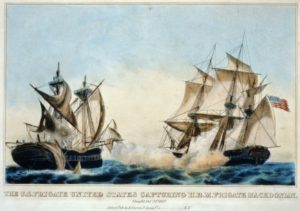
Site Lines: The Mysterious Blue Lights
During the War of 1812, warning signals in the form of two blue lights prevented US ships from slipping past the British blockade of New London’s harbor.
Read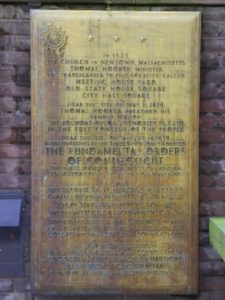
The Fundamental Orders: Connecticut’s Role in Early Constitutional Government
The Fundamental Orders represent what many consider to be the first written constitution in the Western world.
Read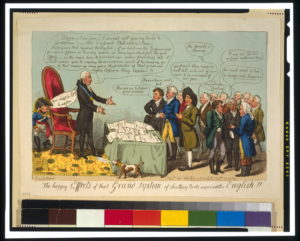
Connecticut and the Embargo Act of 1807
The Embargo Act of 1807 stifled Connecticut trade with Europe, but ultimately boosted local manufacturing.
Read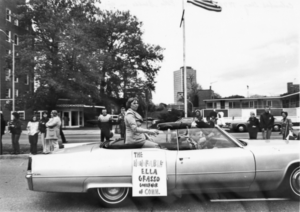
The Education of Ella Grasso
The daughter of Italian immigrants became Connecticut’s first woman governor, Ella Tambussi Grasso.
Read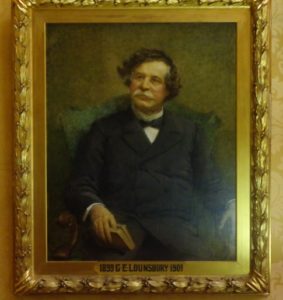
Lounsbury Elected Governor – Today in History: January 4
On January 4th 1899, George Edward Lounsbury was elected the 58th Governor of Connecticut, for which he served roughly three years.
Read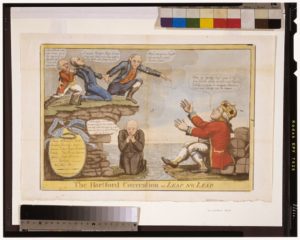
The Hartford Convention or Leap no Leap
A political cartoon lampoons radical members of New England’s Federalist party by poking fun at their motivations for gathering in Hartford to end the War of 1812.
Read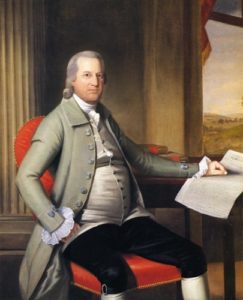
Oliver Wolcott Dies – Today in History: December 1
On December 1, 1797, signer of the Declaration of Independence Oliver Wolcott died while serving his term as Connecticut’s governor.
Read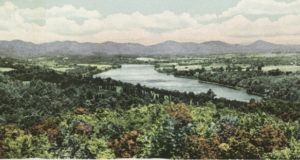
The Connecticut Valley Authority That Never Was
In the early 20th century, supporters of the New Deal tried to recreate the Tennessee Valley Authority in the Connecticut River Valley.
Read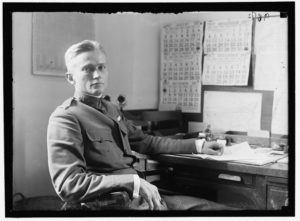
Hiram Bingham III: Machu Picchu Explorer and Politician
Hiram Bingham III was a distinguished scholar and public servant attached to a line of the Bingham family that has lived in Salem, Connecticut, for generations.
Read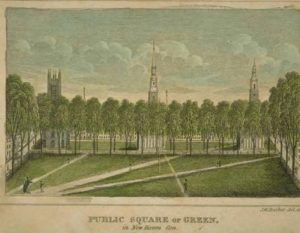
A Separate Place: The New Haven Colony, 1638-1665
In 1638, Puritan leader John Davenport led a group of settlers out of Boston, ultimately founding what became the New Haven Colony.
Read
Hiding the Charter: Images of Joseph Wadsworth’s Legendary Action
Overshadowed by the famed oak, Joseph Wadsworth, “the hero of the Charter,” has become the Rodney Dangerfield of Connecticut history—he doesn’t get any respect—or much recognition.
Read
Roger Griswold: A Governor Not Afraid To Challenge Authority
Born in Lyme, Roger Griswold was a lawyer, judge, and politician who spent the better part of his life in service to Connecticut.
Read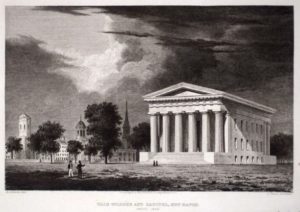
Hartford and New Haven: A Tale of Two Capitals
Before the expense of having two capital cities became too great, both Hartford and New Haven served that function. Hartford became the sole capital in 1875.
Read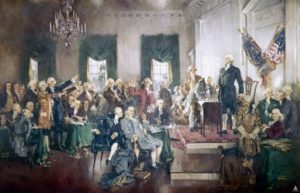
The US Constitutional Convention: America Forms a Bicameral Legislature
In the summer of 1787, Connecticut delegate helped shape the drafting of the US Constitution through his proposal for a bicameral legislature.
Read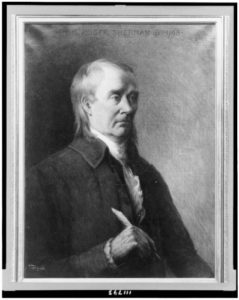
Roger Sherman, Revolutionary and Dedicated Public Servant
Roger Sherman is also the only person to have signed all four of the most significant documents in our nation’s early history.
Read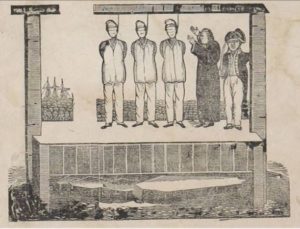
Capital Punishment in Connecticut: Changing Views
Connecticut’s struggles with the issue of capital punishment date back to its earliest days as a colony.
Read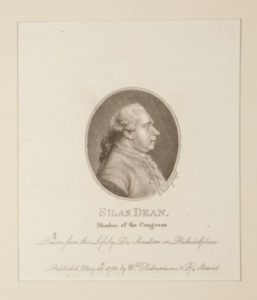
The Rise and Fall of Silas Deane, American Patriot
Esteemed by his fellow patriots as a savvy diplomat who helped cement a strategic alliance with France during the American Revolution, Deane spent his final years under a cloud of suspicion.
Read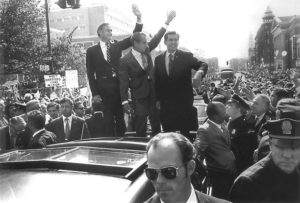
The 42-Day Income Tax
In 1971, to eliminate the state’s budget deficit, Connecticut legislators approved a tax on income. Just forty-two days later, they repealed it, instead voting to increase the state’s sales tax.
Read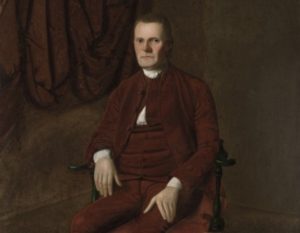
The Connecticut Compromise – Today in History: July 16
On July 16, 1787, a plan proposed by Roger Sherman and Oliver Ellsworth, Connecticut’s delegates to the Constitutional Convention, established a two-house legislature.
Read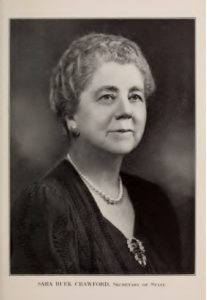
Votes for A Woman: Sara Buek Crawford
As Connecticut’s first female statewide elected official and first female Secretary of State, Sara Crawford broke barriers for women throughout her career.
Read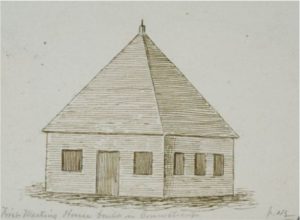
The Free Consent of the People: Thomas Hooker and the Fundamental Orders
Government formed with the consent of the people was a radical idea in the age of nations ruled by monarchs, emperors, and tsars.
Read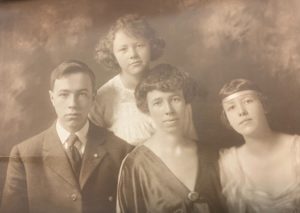
Josephine Bennett: Hartford’s City Mother
By linking disparate social and political movements of the early 20th century, activist Josephine Bennett was “intersectional” well before the term was invented.
Read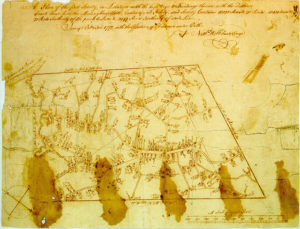
Exploring Early Connecticut Mapmaking
Renderings of the terrain served a variety of purposes, from supporting colonists’ land claims as well as tribal counterclaims to settling religious disputes and even adorning the homes of the well-off.
Read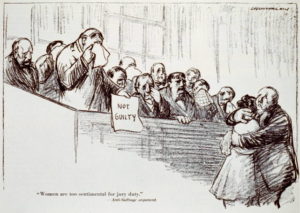
Elizabeth W. Coe Demands the Right of Jury Service
After passage of the 19th Amendment, Elizabeth W. Coe of Waterbury argued that women should be granted the right to serve on jury panels.
Read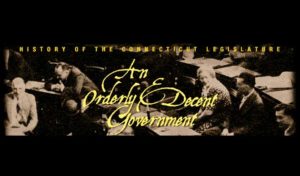
An Orderly and Decent Government
An Orderly and Decent Government is an exhibition on the history of representative government in Connecticut developed by the CT Humanities in April 2000.
Read
Where It All Happened: Connecticut’s Old State House
Connecticut’s Old State House is a memorial to many of the legislative advances made in Connecticut during the most formative years of the United States.
Read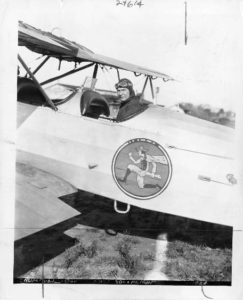
John H. Trumbull: Connecticut’s “Flying Governor”
In 1926, at the age of 53, Connecticut governor John H. Trumbull received his pilot’s license. Piloting flights to his own appointments, he became known as “The Flying Governor.”
Read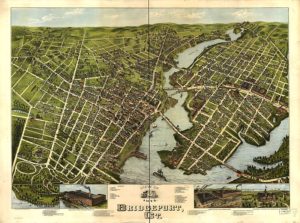
Bridgeport: The First Borough
Bridgeport, by a special act of the state’s General Assembly in October 1800, became the first borough created in Connecticut.
Read
Abraham Ribicoff dies – Today in History: February 22
On February 22, 1998, the first Jewish governor in Connecticut’s history, Abraham Ribicoff, died.
Read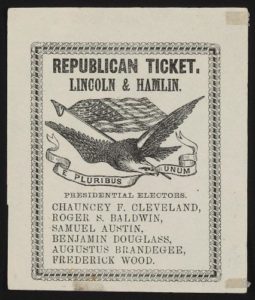
A Successful Lawyer and Politician Who Never Went to College
Chauncey Fitch Cleveland was a lawyer and politician who served the state of Connecticut and the nation, despite never pursuing a college education.
Read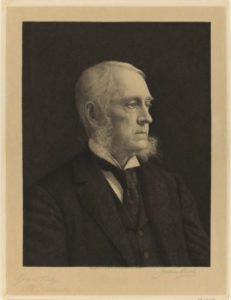
Charles McLean Andrews and Evangeline Walker Andrews
Charles McLean Andrews was one of the most distinguished historians of his time, generally recognized as the master of American colonial history.
Read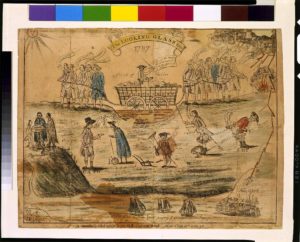
The Connecticut Ratification Convention
Though approved at a renegade convention on September 17, 1787, the US Constitution did not become “the supreme law of the land” until 9 of the 13 states ratified the document.
Read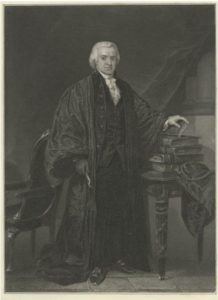
Senator Oliver Ellsworth’s Judiciary Act
On April 7, 1789, the Senate appointed a committee, composed of one senator from each of the 10 states then represented in that body, to draft legislation to shape the national judiciary.
Read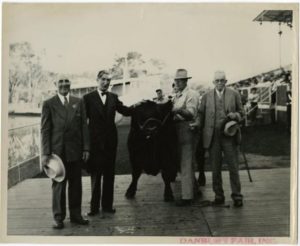
Hard Times: Governor Wilbur Cross and the Great Depression in Connecticut
Born in Mansfield, Governor Wilbur Cross helped see Connecticut through the Great Depression and several natural disasters.
Read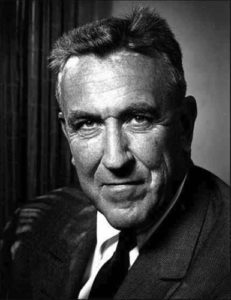
Governor Chester Bowles Dies – Today in History: May 25
On May 25, 1986, Chester Bowles, a Connecticut governor, Congressional representative, ambassador, and author, died in Essex, Connecticut.
Read
An Orderly & Decent Government: A New State, A New Constitution, 1776-1818
The American Revolution prompted enormous political and social changes in other states, but Connecticut remained a “land of steady habits” until 1817 brought change to state government.
Read
An Orderly & Decent Government: Business and Government, 1905-1929
The early years of the 20th century were a time of vigorous political and social reform.
Read
An Orderly & Decent Government: Making Self-Government Work, 1776-1818
The freedom won in the American Revolution did not spread to African Americans. The Constitution of 1818 formed the basis for state government until 1965.
Read
An Orderly & Decent Government: Making Self-Government Work, 1888-1905
Connecticut’s ancient system of town-based representation ensured the continuation of small town values and perspectives.
Read
An Orderly & Decent Government: Establishing Self Government, 1634-1776
Puritans from Massachusetts settled early Connecticut towns, and in 1639 drew up “The Fundamental Orders” by which they would be governed.
Read
An Orderly & Decent Government: Making Self-Government Work, 1634-1776
In 1698 the General Court reorganized itself to deal more effectively with Connecticut’s complex new problems.
Read
An Orderly & Decent Government: Searching for the Common Good, 1888-1905
Stimulated by immigration and industrialization, Connecticut cities expanded rapidly
Read
An Orderly & Decent Government: Significant Events & Developments, 1888-1905
Connecticut saw its population of immigrants from southern and eastern Europe swell in the last decades of the 19th century.
Read
An Orderly & Decent Government: Making Self-Government Work, 1929-1964
Connecticut attempted to reorganize it state government by streamlining its agencies and rejected a number of socially progressive programs.
Read
An Orderly & Decent Government: Searching for the Common Good, 1905-1929
J. Henry Roraback dominated Connecticut like no political leader before him.
Read
An Orderly & Decent Government: Significant Events & Developments, 1905-1929
Early 20th century life in Connecticut was marked by the election of 1912, US entry into World War I, and the Great Depression.
Read
An Orderly & Decent Government: Making Self-Government Work, 1905-1929
With war’s end, suffrage advocates stepped up their campaign for equal rights.
Read
An Orderly & Decent Government: Searching for the Common Good, 1929-1964
Organized labor grew strong during wartime while discriminatory practices in housing and education persisted throughout the state.
Read
An Orderly & Decent Government: Making Self-Government Work, 1866-1887
The late 1800s witnessed significant challenges to Connecticut’s voting and taxation laws.
Read
An Orderly & Decent Government: Significant Events & Developments, 1929-1964
The era of Wilbur Cross and the Great Depression transitioned into World War II and state control by Democrat mastermind John Bailey.
Read
An Orderly & Decent Government: Significant Events & Developments, 1965-Now
Connecticut recast its constitution, reapportioned its House and Senate, and struggled with providing equal rights to all races and socio-economic classes in the state.
Read
An Orderly & Decent Government: Significant Events & Developments, 1776-1818
With its limited supply of fertile land either occupied or exhausted, one of Connecticut’s principal exports in the post-Revolutionary years was people.
Read
An Orderly & Decent Government: A Co-Equal Branch of Government, 1965-Now
Connecticut replaced town-based representation with legislative districts while the state struggled to supply equal opportunities across race and class lines.
Read
An Orderly & Decent Government: Making Self-Government Work, 1965-Now
The 1965 state constitution helped redistribute populations more evenly into districts. It was also a period of new representation for women and African Americans in the state government.
Read
An Orderly & Decent Government: Crisis and Recovery, 1929-1964
World War II helped bring an end to the Great Depression in Connecticut. Following the war, the growth of the suburbs redefined life in the state.
Read
An Orderly & Decent Government: Searching for the Common Good, 1965-Now
The state generated revenue for urban renewal and social programs through gaming and income tax initiatives.
Read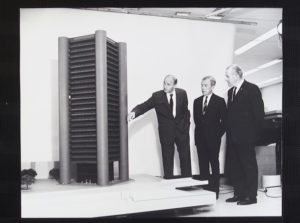
Richard Lee’s Urban Renewal in New Haven
Thanks largely to his efforts at Urban Renewal, New Haven’s Richard C. Lee became one of the most celebrated and well-known mayors of the 20th century.
Read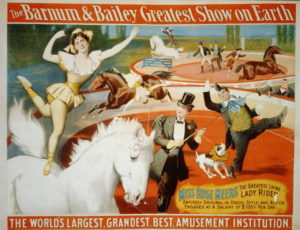
P. T. Barnum: An Entertaining Life
Once declared “the most widely known American that ever lived,” this showman’s life story is as colorful as the entertainments he provided in the mid-1800s.
Read
The War Connecticut Hated
For most Connecticans, the War of 1812 was as much a war mounted by the federal government against New England as it was a conflict with Great Britain.
Read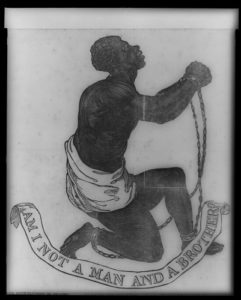
Early Anti-slavery Advocates in 18th-century Connecticut
Ideals advanced during the American Revolution inspired many of the state’s religious and political leaders to question and oppose slavery in the late 1700s.
Read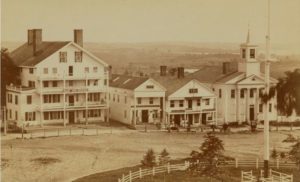
The Peace Movement in Litchfield
While the peace movement in Litchfield was short-lived, it provides a reminder of the disparity in public opinion during the first few turbulent months of the Civil War.
Read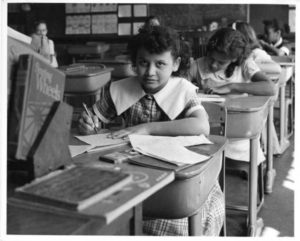
Five Minutes that Changed Connecticut: Simon Bernstein and the 1965 Connecticut Education Amendment
“There shall always be free public elementary and secondary schools in the state. The general assembly shall implement this principle by appropriate legislation.”
Read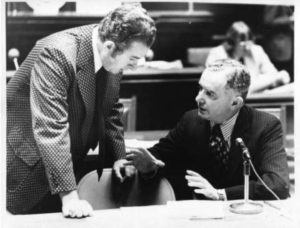
William O’Neill: Climbing Up the Political Ladder
Connecticut’s 84th governor, William Atchison O’Neill, was born in Hartford on August 11, 1930 but grew up in East Hampton.
Read
A Public Responsibility: Conservation and Development in the 20th Century
The seemingly contradictory calls to use or preserve the state’s natural resources are, in fact, closely related efforts that increasingly work in tandem—but not without conflict.
Read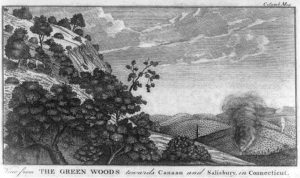
Dynamic Tensions: Conservation and Development up to the 1920s
From indigenous practices to Progressive-era projects, changing attitudes toward natural resources have shaped and reshaped the state’s landscape.
Read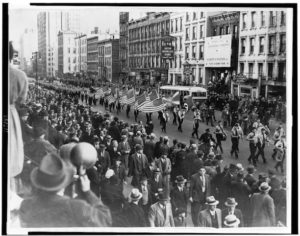
Southbury Takes On the Nazis
When the Nazis moved into Southbury, however, local citizens reacted forcefully, eventually pushing the anti-Semitic settlers out of the state.
Read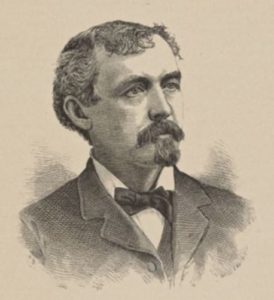
William Edgar Simonds: A Schoolteacher Turned Civil War Hero
Originally a teacher, William Edgar Simonds’ service during the Civil War launched Simonds into a life of politics and international acclaim.
Read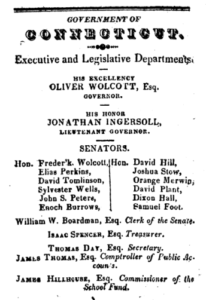
Elias Perkins: One of Lisbon’s Most Accomplished Public Servants
Elias Perkins’s career in public service lasted nearly half a century and made him a popular figure both locally and nationally.
Read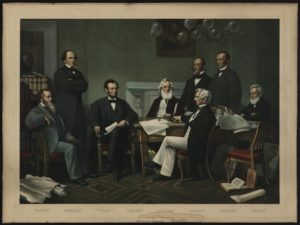
Gideon Welles’s Role in Lincoln’s Cabinet
Earning the trust of Abraham Lincoln, despite reservations from many in Lincoln’s cabinet, Gideon Welles navigated the Union navy through the Civil War. He did this largely through expanding the navy and investing in new technology, such as ironclad ships.
Read
The Legend of the Charter Oak
The Charter Oak is a symbol of Connecticut’s enduring tradition of representative government and self-rule.
Read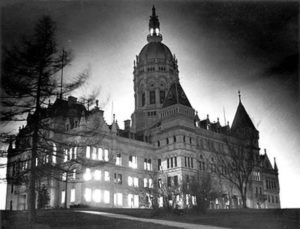
Connecticut State Capitol
Still in use today, the State Capitol continues to be a crucial site of lawmaking, state business, protest, advocacy, and more.
Read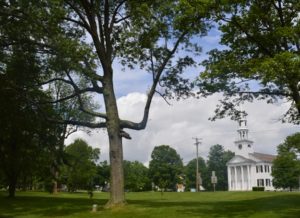
The Constitution Oak
Connecticut, the “Constitution State,” has a unique history of state constitutions. The “constitution” celebrated on our license plates is the Fundamental Orders of 1638.
Read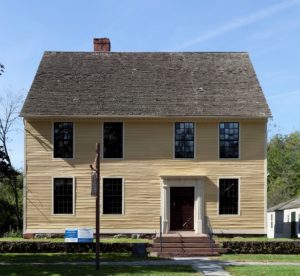
Site Lines: Silas Deane
Despite Deane’s role in securing French supplies and support for the American Revolution, his accomplishments have long been obscured by whispers of treason, a spy’s double-dealing, and his own sudden death.
ReadMore Articles




